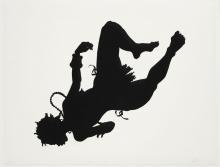Kim D. Hunter
The Official Report
on Human Activity
Zoom discussion
Thursday, April 22
7:00–8:30 P.M. EDT
Projects in Poetics and Event Horizon announce an informal discussion with Detroit poet kim d. hunter, author of the ground-breaking collection of short stories from Wayne State University Press. Guests are welcome; register here: https://bit.ly/2Qm6tcG.
The Official Report on Human Activity, which is neither official nor a report, is a collection of long stories that are linked by reoccurring characters and their personal struggles in societies rife with bigotry, in which media technology and capitalism have run amok. These stories approach the holy trinity of gender, race, and class at a slant. They are concerned with the process and role of writing intertwined with the roles of music and sound. … More

















